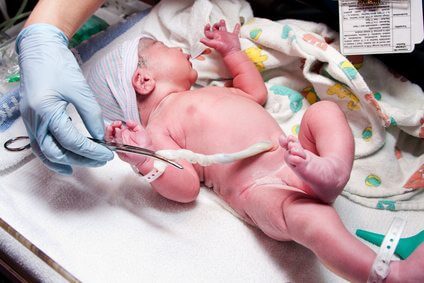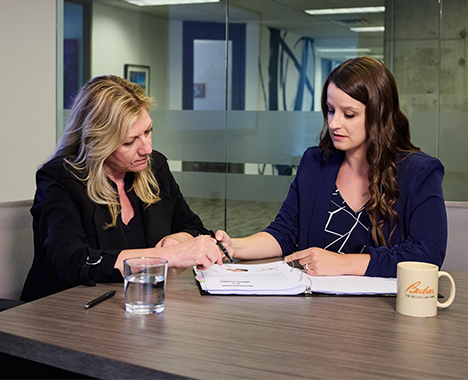Schedule a Consultation
216-621-3000Schedule a Consultation
216-621-3000
Medical science is not a static science, but is continually changing in response to experience and research. Methods that were the standard of care ten years ago can now be as outdated as the regular use of leeches. One area that is getting some attention recently is the timing of clamping and cutting the umbilical cord after birth.
The umbilical cord is the lifeline of survival for the developing baby. It is the conduit of blood, oxygen, and nutrients, and the means by which waste is extracted. There continues to be some function of the umbilical cord after birth that can last on average for up to about five minutes after delivery. The common practice is to clamp and cut the umbilical cord immediately after delivery. According to the American College of Obstetricians and Gynecologists (ACOG) from a 2012 opinion, the clamping happens within 15 to 20 seconds after birth, though they suggest a slight delay, offering that it should occur 30 to 60 seconds after birth. However, it is a half-hearted recommendation, observing that the evidence of benefits from a delay is not yet conclusive. The World Health Organization (WHO), on the other hand, recommends that clamping be delayed for one to three minutes in babies who are delivered at term.
Proponents of delayed clamping propose that there are numerous health benefits:
These benefits make sense as the placenta continues to operate for a short time after birth, and the baby, particularly when preterm, could benefit from increased resources. However, opponents of delayed clamping demonstrate that there might be dangers to delayed clamping, such as:
The renewed interest in this subject has increased based on by a new Swedish study, published in the JAMA Pediatrics Journal. There, two groups (both full-term and low-risk pregnancies) were evaluated—one where clamping occurred within 10 seconds, and the other where it occurred at the three minute mark. A four-year evaluation then ensued, and the findings showed that delayed clamping may be connected to improved social skills and fine motor skills.
One other potential difficulty with delayed clamping is that it impairs doctors’ ability to measure the cord blood gases, which help doctors (and later, lawyers) to determine if the baby’s oxygen intake was decreased during labor. Cord gas measurements are often instrumental in proving that birth injuries like cerebral palsy were caused by medical negligence.
In the not-so final analysis, it’s clear that more research is needed to determine whether delayed clamping is a good idea. Researchers are comparing term and pre-term infants, and they are currently evaluating long-term outcomes (that is, how do infants in the standard and delayed categories compare health-wise over time).
The choice of timing for the clamping and cutting of your baby’s umbilical cord is a medical decision, but you should ask your doctor about it before delivery. It is important that your doctor give you informed consent about your choices, and that you are comfortable with the decision. For more information on delayed umbilical cord clamping, contact our medical malpractice attorneys at (440) 252-4399 or online for a free consultation.

